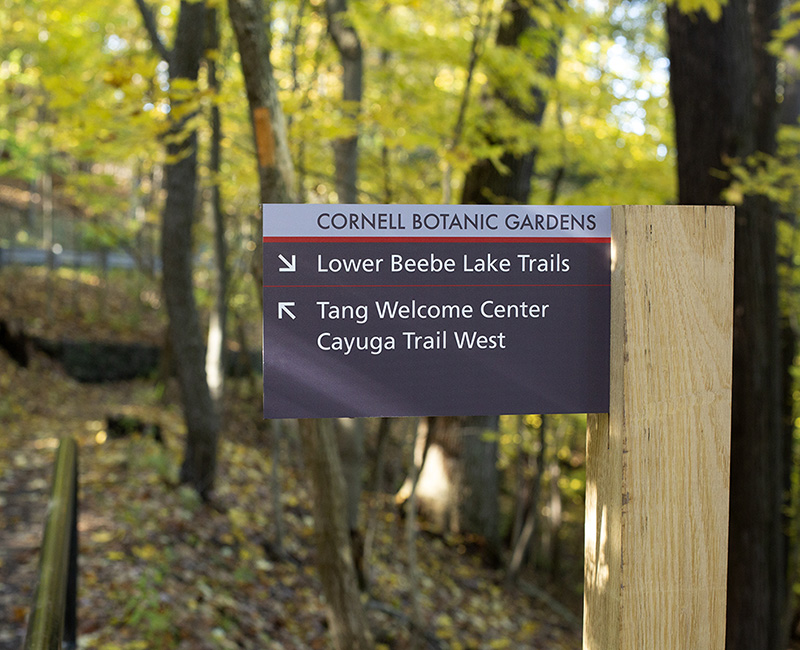
A series of 23 pedestrian wayfinding signs now connect North Campus, the Arts and Ag Quads and Cornell Botanic Gardens along Beebe Lake and nearby trails.
Cornell Botanic Gardens recently completed a project designed to make Cornell’s large and complex campus easier to navigate.
A series of 23 pedestrian wayfinding signs now connect North Campus, the Arts and Ag Quads and Cornell Botanic Gardens along Beebe Lake and nearby trails. With directional signs in place, Cornell Botanic Gardens’ Beebe Lake natural area is now more accessible and its walkways can be better utilized to join adjacent campus areas. The project represents the first pedestrian implementation of the university’s signage and wayfinding master plan.
Botanic Gardens staff worked closely with University Landscape Architect David Cutter to implement the new signs, with an eye toward sustainability. Sign posts were fabricated from locally sourced locust, a naturally weather resistant alternative to chemical-laden pressure-treated lumber. David Russo ’82, J.D. ’85, provided the funding for the project.
“Pedestrian wayfinding is especially important in less celebrated parts of the campus, and in areas adjacent to visitor destinations, such as the new Martin Y. Tang Welcome Center,” Cutter said.
The signs, located at walkway intersections and on heavily trafficked paths, direct pedestrians to destinations such as the Herbert F. Johnson Museum of Art, North Campus living centers and to Cornell Botanic Gardens areas, including the Nevin Welcome Center and surrounding gardens. The new signs provide wayfinding along Judd Falls Road and in specialty gardens, making it easier to explore the natural beauty that is distinctive to Cornell University.
Published in the Cornell Chronicle, November 8, 2018